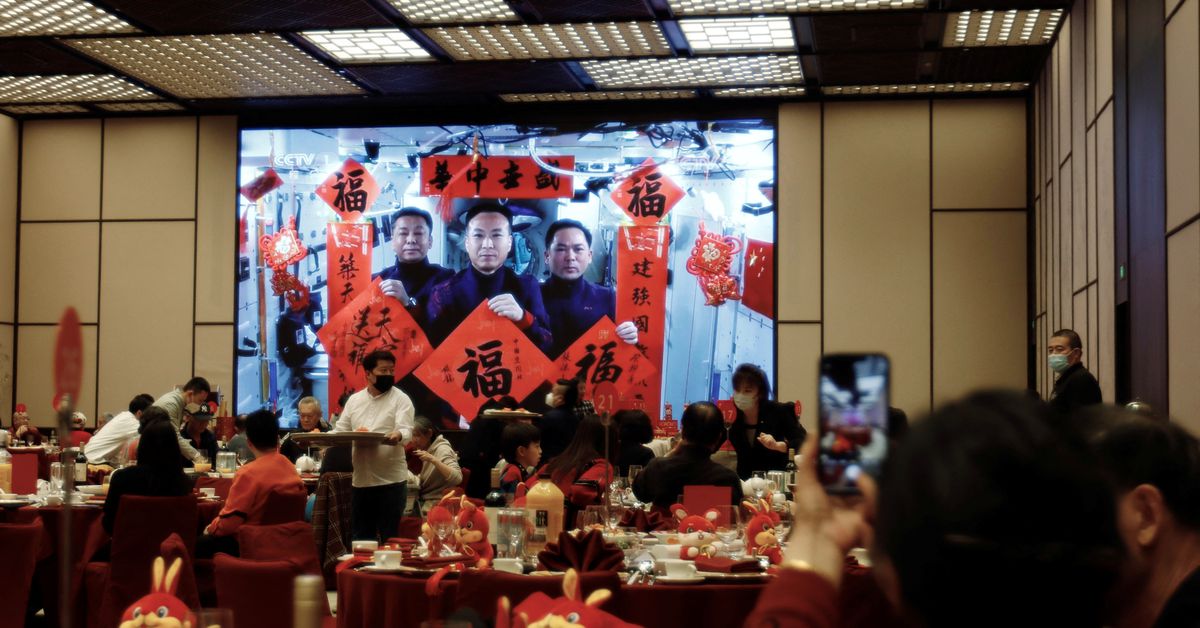China plans to expand its space station to six modules from three in coming years, offering astronauts from other nations an alternative platform for near-Earth missions as the NASA-led International Space Station (ISS) nears the end of its lifespan.
The operational lifetime of the Chinese space station will be more than 15 years, the China Academy of Space Technology (CAST), a unit of China’s main space contractor, said at the 74th International Astronautical Congress in Baku, Azerbaijan, on Wednesday.
That would be more than the 10 years previously announced.
China’s self-built space station, also known as Tiangong, or Celestial Palace in Chinese, has been fully operational since late 2022, hosting a maximum of three astronauts at an orbital altitude of up to 450 km (280 miles).
At 180 metric tons after its expansion to six modules, Tiangong is still just 40% of the mass of the ISS, which can hold a crew of seven astronauts. But the ISS, in orbit for more than two decades, is expected to be decommissioned after 2030, about the same time China has said it expects to become “a major space power”.
Yes a cheap Chinese space station run by massively insecure gov. What could possibly go wrong
“Rogue space junk” Ooops!
Have more faith. It’s only high quality Chineseium they’re using
This is the best summary I could come up with:
BEIJING, Oct 5 (Reuters) - China plans to expand its space station to six modules from three in coming years, offering astronauts from other nations an alternative platform for near-Earth missions as the NASA-led International Space Station (ISS) nears the end of its lifespan.
China’s self-built space station, also known as Tiangong, or Celestial Palace in Chinese, has been fully operational since late 2022, hosting a maximum of three astronauts at an orbital altitude of up to 450 km (280 miles).
At 180 metric tons after its expansion to six modules, Tiangong is still just 40% of the mass of the ISS, which can hold a crew of seven astronauts.
But in a blow to China’s aspirations for space diplomacy, the European Space Agency (ESA) said this year it did not have the budgetary or “political” green light to participate in Tiangong, shelving a years-long plan for a visit by European astronauts.
Tiangong has become an emblem of China’s growing clout and confidence in its space endeavours, and a challenger to the United States in the domain after being isolated from the ISS.
Russia, a participant in the ISS, has similar space diplomacy plans, suggesting that Moscow’s partners in the BRICS group - Brazil, India, China and South Africa - could construct a module for its space station.
The original article contains 415 words, the summary contains 218 words. Saved 47%. I’m a bot and I’m open source!
I welcome all scientific space funding with open arms.
Some NASA guys should spray paint Pooh bear on it
Very exciting given the Spectroscopic Investigations of Nebular Gas device from India that’ll soon (hopefully) be on the station.
Least racist .world thread:




